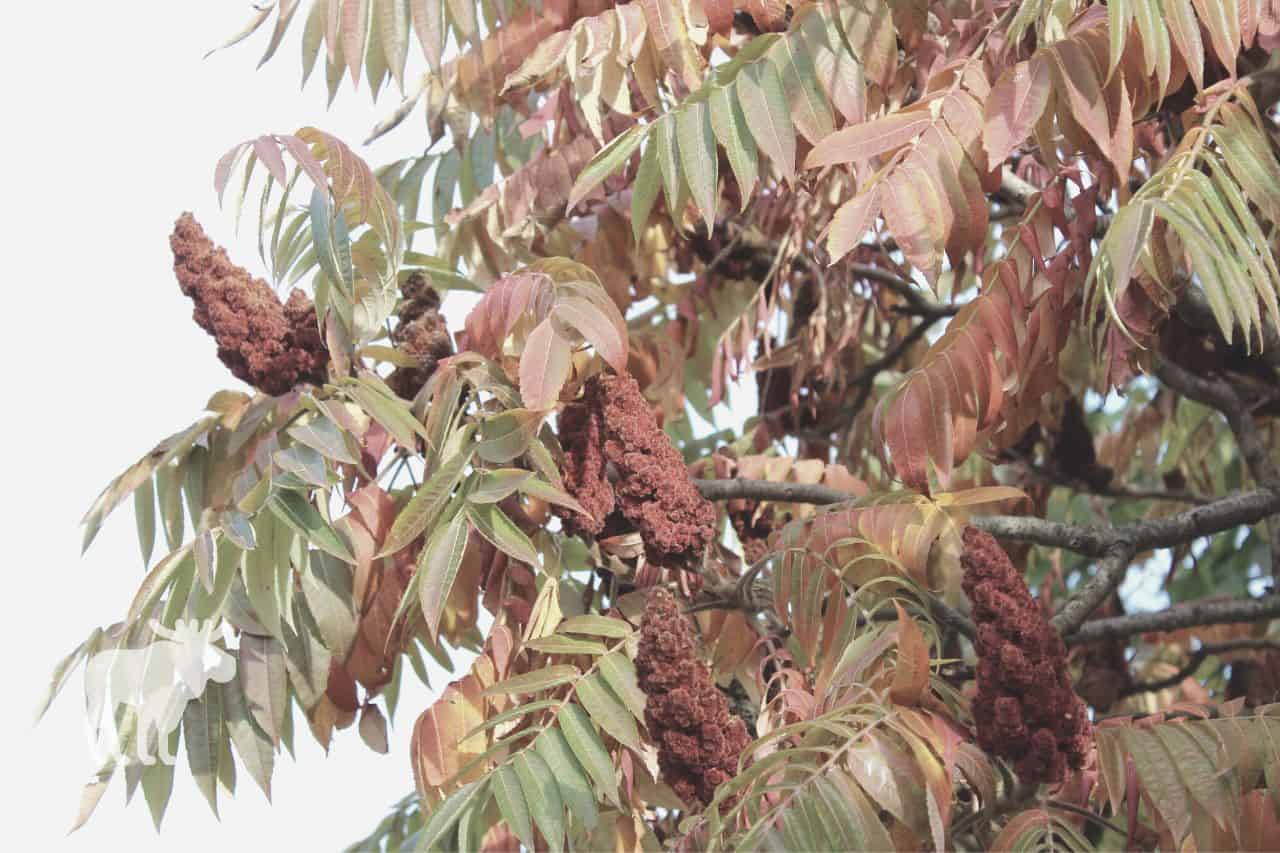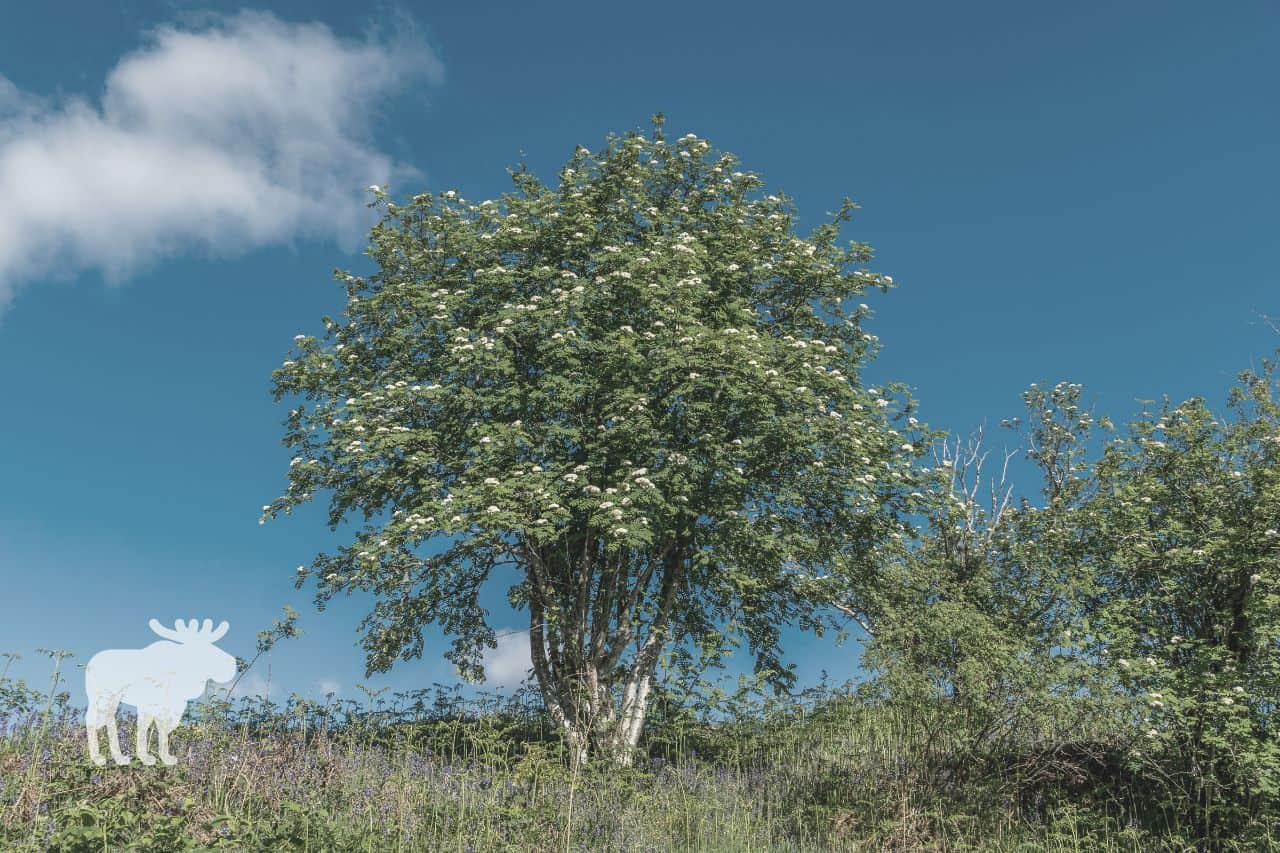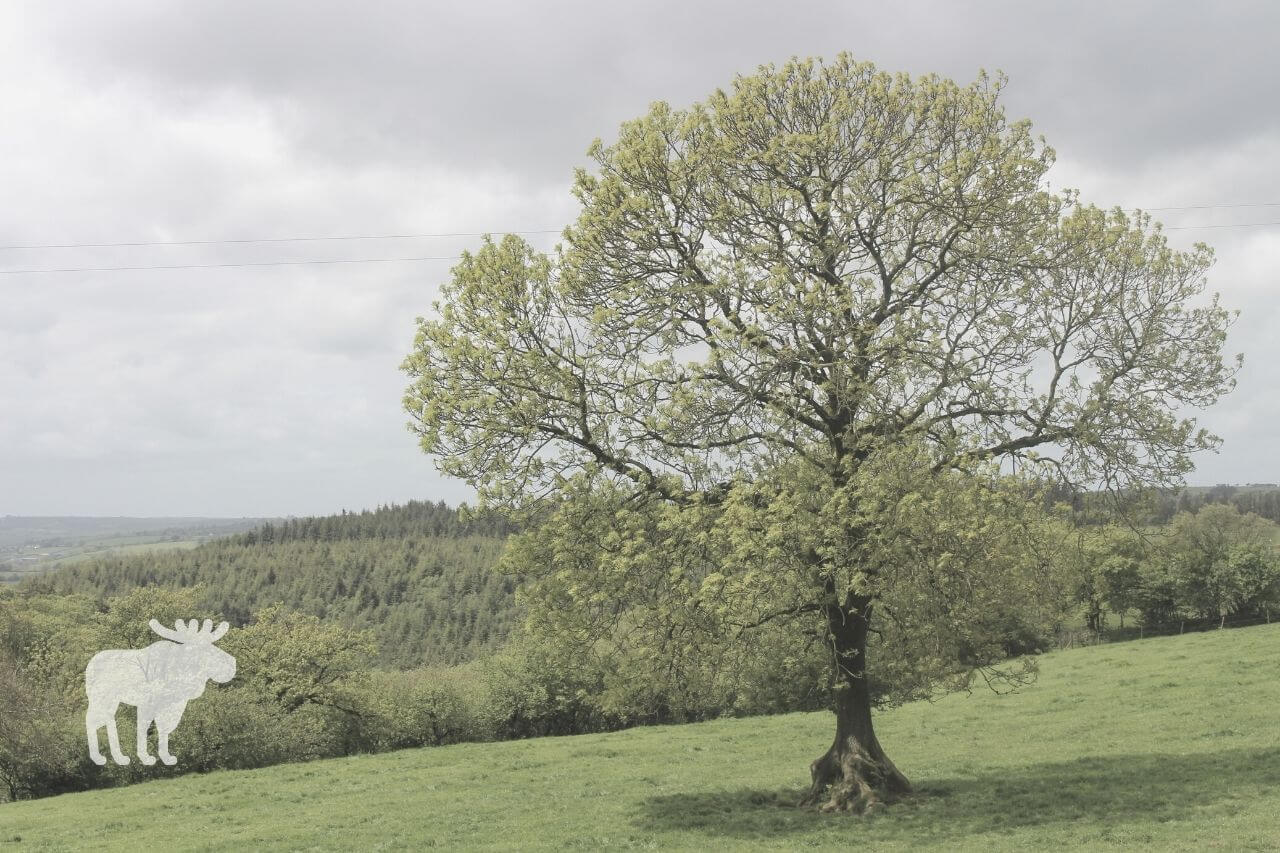Black walnut trees produce walnuts; but other than that, you may think that they look pretty average. Do you find yourself frequently confusing black walnut trees with other kinds of trees? If so, you’re not alone; there are many other trees that look like black walnut trees. Read on to learn more about some of these trees and how to tell them apart from black walnuts.
What You'll Learn Today
Trees That Look Like Black Walnut
1. Sumac Trees

There are many different species of sumac trees and shrubs found throughout much of the world. Most of them look strikingly similar to young walnut trees.
Most sumacs have pinnately compound, oppositely arranged leaves, as black walnuts do. The leaflets come in varying shades of green and are generally slender and pointed.
Unlike black walnut trees, sumacs produce flowering and fruiting clusters on the tips of their branches. The flowers and fruits are generally white and red.
What’s more, sumacs generally turn a fiery red in the fall, whereas black walnuts typically turn yellow.
Finally, sumac trees are much smaller than black walnuts; they only grow to about 33 feet tall at most, whereas black walnut trees typically grow about 50 to 75 feet tall.
2. Rowan Trees

Rowan trees are found in cool climates throughout the Northern Hemisphere. Most of them are trees ranging between 30 and 60 feet tall, though some are smaller and considered shrubs.
Like black walnuts, rowans have pinnately compound leaves and come in various shades of green. However, the leaflets are more toothed and jagged looking, and some of them are more rounded at the tips.
Also, rowans tend to turn red in the fall, while black walnuts turn yellow.
Finally, rowan trees produce berry-like fruits and fruit clusters which are noticeably different from the meaty green fruits of the black walnut tree.
3. Hickory Trees
Hickory trees are found in temperate regions of North America, Europe, and Asia. They are subdivided into about 18 species.
It is easy to confuse hickory trees with black walnut trees for a couple of reasons.
First, they both have pinnately compound leaves. Second, They both produce hard, green, round fruits.
What’s more, many hickories are roughly the same size as black walnut trees.
That said, hickory leaves are generally made up of fewer leaflets, and the leaflets are typically rounder than those of black walnut trees.
Hickories have darker green leaves than black walnuts, and they typically have denser foliage.
4. Mahogany Trees

Mahogany trees are native to tropical regions of North and South America. They share many similarities as well as some noticeable differences with black walnut trees.
The leaves of mahogany trees are pinnately compound. Some are pointed much like those of black walnuts, while others are more rounded and smooth.
Most mahogany trees have lighter brown-gray bark than walnut trees do, and the grain of the bark is straight as opposed to the diamond-shaped pattern displayed by black walnuts.
Mahogany trees produce fruit, like black walnut trees do, but the fruits are typically brown and have an oblong shape.
Some mahogany trees can grow up to 200 feet tall, though most are closer in size to black walnuts–on average, they reach mature heights of 40 to 60 feet.
5. Elm Trees

Elms are found widespread throughout much of the Northern Hemisphere. They can grow in both temperate and tropical regions.
There are many different species of elm, and some look more like black walnuts than others. Most of them have light green, alternate compound leaves.
That said, the leaflets are more jagged and toothed in appearance than those of black walnuts. What’s more, their alternate arrangement is noticeably different from the pinnate arrangement of black walnut leaflets.
6. Beech Trees
Beech trees are found in temperate areas of Asia, Europe, and North America. They share a few similarities with black walnuts, but they also have many differences if you know what you are looking for.
Beech trees have alternate compound leaves, and the leaflets are generally wider and stockier than black walnut leaflets. These leaves usually turn a fiery orange-yellow to orange-red in the autumn.
The bark of beech trees is also noticeably different. It has a smooth surface and a patchy white-and-brown appearance, as opposed to the furrowed bark of black walnut trees.
7. Ash Trees

Ash trees are widespread throughout much of the Northern Hemisphere. They come in various species, and their appearance varies somewhat depending on the species.
That said, most ash trees have opposite, pinnately compound leaves, and many of the leaflets are long and pointed. What’s more, the bark of most ash trees is gray-brown and diamond-patterned, much like black walnut trees have.
The most noticeable difference between the two trees is that ash trees produce distinctive flower clusters in the spring, while black walnuts produce small, green catkins. What’s more, the leaflets of some ash trees may be more narrow or more rounded than those of black walnuts.
8. Chestnut Trees
Chestnut trees, like many of the trees on this list, are widespread throughout the northern hemisphere.
Though the leaves of these trees are considered simple (as opposed to compound), they often grow along the stem in such a way as to appear like leaflets in a compound leaf. The leaves are light green with serrated edges.
The bark is similar in color and pattern to that of black walnut trees, and most chestnuts are roughly the same height as black walnuts at maturity.
The serrated edges of the leaves are an easy way to distinguish chestnuts from black walnuts. What’s more, the fruits produced by chestnut trees are covered in distinctive spikes, while black walnut fruits are smooth.
9. Kentucky Coffee Trees
These trees are found in parts of the United States and Canada. Upon first glance, they share several characteristics with black walnuts.
Their leaves are described as bipinnately compound, and the leaflets are oppositely arranged and light green, much like the leaves of black walnut trees.
What’s more, Kentucky coffee trees are roughly the same height as most black walnut trees, growing to between 60 and 70 feet tall.
That said, the leaflets on these trees are smaller and stubbier-looking than black walnut leaflets. The bark is also much different–it is scaly in appearance and lacks the well-defined ridges and patterns of black walnut bark.
Check out this video to learn more about these trees:
10. Chinaberry Trees
Chinaberry trees are closely related to mahogany and are native to parts of Australia and Asia.
These trees can grow up to 150 feet tall, but in most cases they top out around 20 to 40 feet. The leaves are compound two to three times over; in other words, each leaf is made up of compound leaflets.
The arrangement of the leaflets gives chinaberry leaves a similar appearance with black walnuts. That said, the leaves are much larger, and they have a more compound, complex design.
These trees produce clusters of flowers which then form small, hard fruits. The fruits are smaller than those of black walnuts, and the flowers are far more showy than the small catkins of black walnut trees.
Conclusion
As you can see, there are many different trees that are similar in appearance with black walnuts. Some of these trees include elm, sumac, ash, mahogany, and chestnut trees.